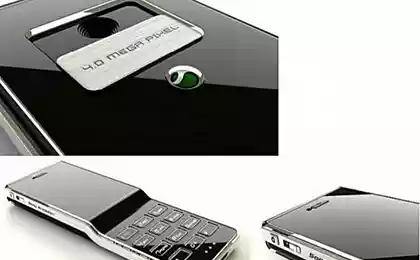466
OMG: TD! with ambiguous name

As is known, blisks are balancing only on one axis. This is not a serious drawback, the training is no more difficult than Cycling and is at best minutes and at worst a few hours. But many have seen the seventh episode of "Star wars" with a cheerful droid BB-8, moving on the ball, or know about the existence of sharovatov. So quite often, when it comes to monowheels, I remember the idea of balancing the vehicle on two axes. And there was an inventor who made the fireball. or balancing on one ball of the vehicle from the ambiguous to the Russian ear the name eBall.
Drones
The word "charabot" someone may be unfamiliar, so will allow myself a short excursus to the side. In the 20th century, robots were doing, as a rule, statically stable, off they stood quietly for a minimum of three wheels, legs, or other supports. The inverse problem of the pendulum, allowing to maintain the unstable equilibrium, solved the control system of launch vehicles, and because of the cost they were far from home use. But in the 21st century the availability of microelectronics has allowed to create compact and cheap control system, and enthusiasts began to experiment. First the robot learned continuously balancing on the ball, called Ballbot 2004.

But the design of Sarasota better explain, for example, Rezero 2010:

Arranged, charabot very simple — as the only wheel used ball. It is driven by at least three engines, the axis of rotation of which can be located both along the meridians and latitudes (in other words, vertically or horizontally). Stand on top of the battery and control system.
There are also domestic ballbots, for example, the publication on Habre, and here's a video from there:
eBall
Fame sharovatov greatly increased the chances that someone will try to make the vehicle on this principle. This pioneer was Sambat Uli (Uli Sambeth) from Essen (Germany), who founded a startup Innovated Transport Systems. After spending two years in development, he showed a prototype in October this year at the toy fair in Nuremberg. By analogy with seabottom I decided to call the device a get.
In an interview with local television Uli says he is looking for partners for further development, and shows the version is not the final. And the journalist, most likely, the first attempt turned to go. The network can find another video that explains how to get started on, and called it a maximum speed of 10-12 km/h. However, the exhibition Uli calls the maximum speed is 20 km/h. other device parameters are unknown, but yesterday in the Google's cache you can find a PDF with the technical specifications on the official website, which stated cruising range of 10 km And on the official website to collect pre-orders for 949 euros.
Another video shows the operation of the adaptive lighting and a surprisingly good cross-country get on the ground and small curbs.
The chances of success
Compare get with blisks very interesting:
Advantages:
- Can stand on the spot.
- Requires virtually no training.
- More maneuverable.
- Indirect drive ball allows for a better seal engines.
- Lower speed. Drive for 30 km/h it is unlikely to succeed.
- Lower permeability.
- The range of the battery of the same capacity is likely to be less.
- Less compact, and worse combined with public transport.
- Three engines instead of one, and less powerful.
- Slippage drives the ball reduces the theoretical maximum power.
Source: geektimes.ru/post/282644/























